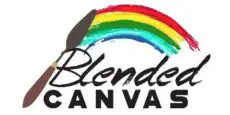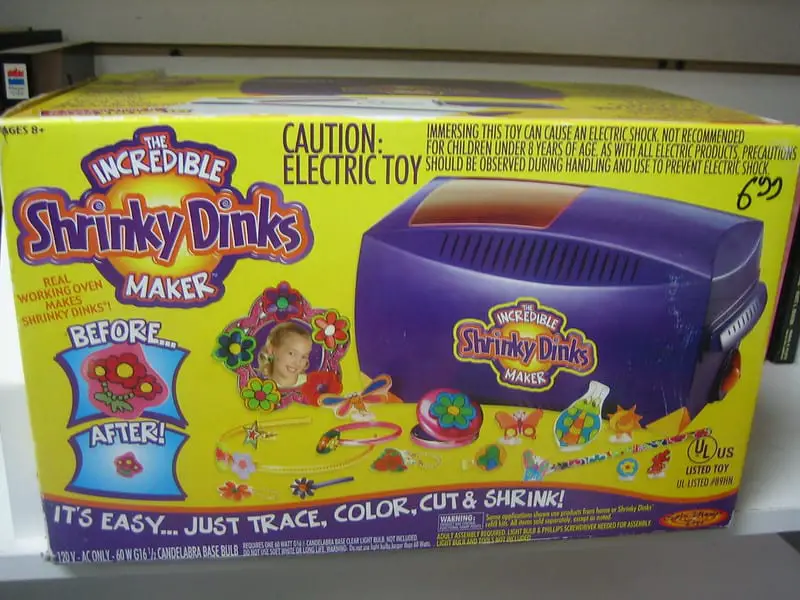If you’re using recycled plastic for crafts at home, you’ll want to know what type will work for Shrinky Dinks. The number on the plastic will let you know what kind it is, so you should choose the ones that suit your projects.
You can’t use #5 or #1 plastic for Shrinky Dinks. While some sites say that #5 works, this is incorrect. The only plastic that will work for this craft is #6 plastic because it’s polystyrene, which shrinks when exposed to heat. Other plastics melt, turn white, burn, or curl.
So, you’ll need to check the plastic number before you attempt to bake it. Otherwise, you could have a mess on your hands! There’s more to learn about reusing plastic for this project, so let’s keep reading.
Best Plastic To Use for Shrinky Dinks
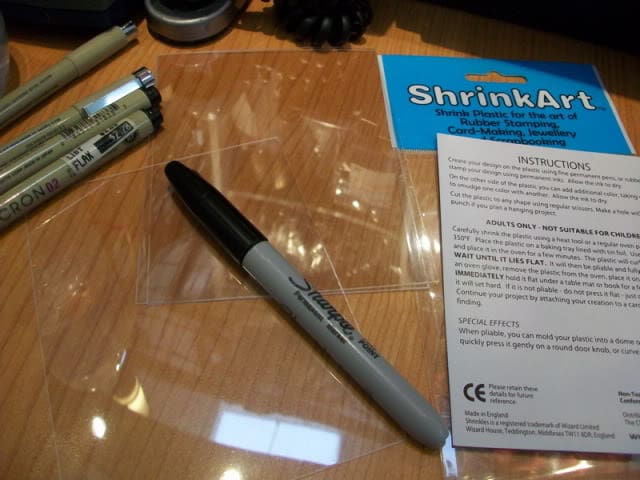
The best plastic for crafting Shrinky Dinks would be polystyrene, plastic #6. The project kit includes thin plastic sheets made from polystyrene. As the plastic bakes in the oven, it shrinks to about a third of its size, becoming almost nine times as thick.
Other types of plastic can’t shrink that much. For instance, #1 plastic usually shrinks some, but it can also melt, turn white, and curl in the oven. #1 plastic might also be toxic when heated, making it best not to use it.
Additionally, #5 plastic isn’t great for this, either. While not as toxic, it still melts some when you bake it. Some websites say you can use #5 for Shrinky Dinks, but it’s not worth it. You won’t get good results. The plastic doesn’t shrink well and is sure to warp.
Check out this Shrinky Dink set, it comes with 20 sheets, color pencils, and all the tools you need to get started!

You’ll want to choose #6 plastic only for making shrink crafts. #1 and #5 don’t have the properties you need to have your project turn out well. Polystyrene is always the best choice for Shrinky Dinks.
What Plastic Can I Use for Shrinky Dinks?
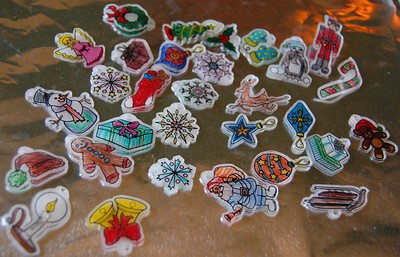
For Shrinky Dinks, you can use any plastic with #6 in the recycle symbol on the bottom. Plastic with different numbers can be dangerous to put in your oven, so you must avoid using it.
Polystyrene is easy to find in any store, not just in arts and craft shops. It’s widely available online, and you can find sheets for sale almost anywhere. However, you can find it on many disposable cups, to-go food boxes, and CD cases. If it comes with a #6, it will shrink when you bake it.
The best way to use these recycled #6 plastics is to cut them up and flatten them. Then, you can draw on them using Sharpies or colored pencils. Your designs will become more vibrant as the plastic shrinks in the oven.
Check out my other article that goes over how to use Sharpies on your Shrinky Dinks. It’s a must read if you plan on using markers.
So, you can use any polystyrene items for this fun craft. #6 plastic is difficult to recycle, so many centers won’t accept it. It’s best to collect it at home and make it into Shrinky Dinks when you can. Doing so is a fun way to reuse this plastic!
Can You Use Laminating Sheets for Shrinky Dinks?

Laminating sheets consist of two different types of plastic: PET and EVA. PET stands for polyethylene terephthalate, which is the #1 plastic. EVA, ethylene-vinyl acetate, is the #7 plastic. As mentioned above, #1 plastic won’t work for creating Shrinkles. #7 plastic will melt and won’t form how you expect.
So, neither of these plastics has the properties you want when baking a shrink project. That means the laminate sheets won’t work well for Shrinky Dink projects. If you try it, you’re sure to end up with a mess.
Laminate sheets are remarkable for their intended use— covering countertops and cabinets. The material can shrink slightly to adhere to those surfaces, but it won’t shrink enough to work in this craft. Plus, it could melt the plastic if you choose the incorrect heat setting. Burning, discoloration, and warping are also possibilities.
Overall, you should always choose #6 plastic for making your charms. Other plastic numbers don’t suit this purpose very well. Plus, they may not behave how you want them to in the oven, which could be a fire hazard.
What Can I Use Instead of Shrinky Dink Plastic?
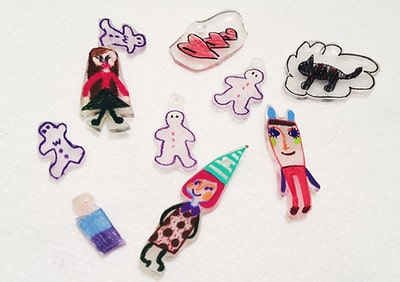
You don’t need to only use the kits that you find in craft stores for Shrinky Dinks. If you choose a plastic with a #6 on the bottom, it should behave the same way in the oven. You can also find polystyrene sheets for highly cheap at home improvement and repair shops.
If you’re using recycled #6 plastic, wash it first. You need to remove all the labels from the plastic, then cut it apart so you can flatten it. It helps if you leave a heavy textbook on the cut plastic for a few hours.
Then, you can draw on the plastic piece with a Sharpie. Markers tend to work best on reused plastic because there’s not enough texture for colored pencils to grab onto. After drawing and filling in your design, you can bake the plastic as usual to get outstanding results.
In short, if there’s a #6 on the plastic, you can use it. The only downside to reusing #6 is that it can be hard to keep it flat to draw on. If it curls in the oven, it’s still easy to flatten it out with a spatula or spoon. Still, making fun crafts is a great way to keep more polystyrene out of garbage dumps.
Final Thoughts
In conclusion, you shouldn’t use #1 or #5 plastic for making your Shrinkles. Plus, any other number aside from #6 won’t work! You should always take care when baking plastic, so choosing the right type is very important to avoid fire hazards.
Luckily, plenty of plastic items come with a #6 on the bottom! You just need to check before putting anything in the recycle bin. The most common thing would be plastic cups, although you can also find the #6 on many other home goods.
Make sure to follow all my tips and recommended products to ensure your Shrinky Dink project turns out great! Also, don’t forget to check out my other articles for all your painting Q&A’s. Happy painting!
